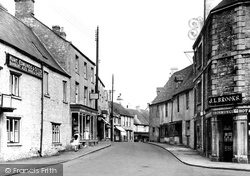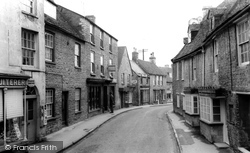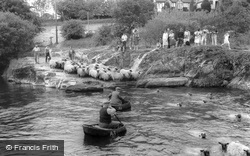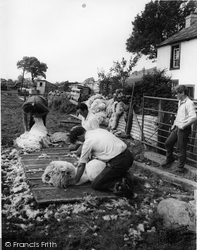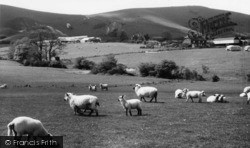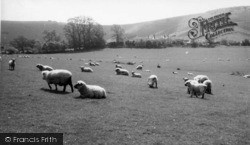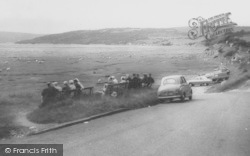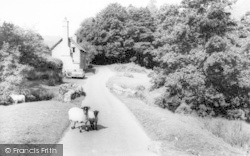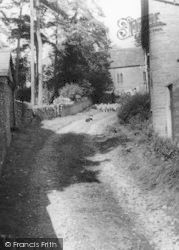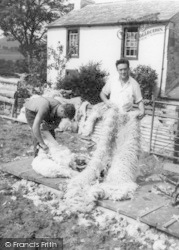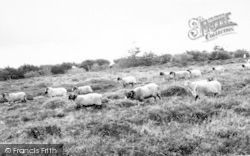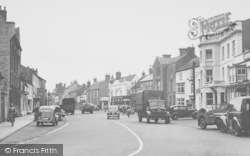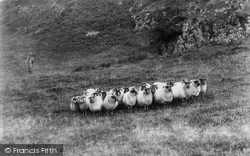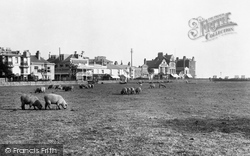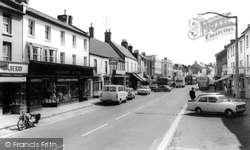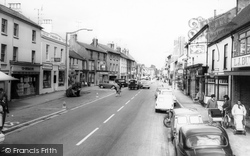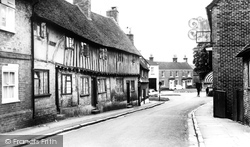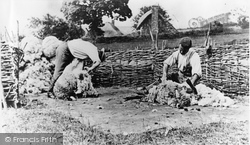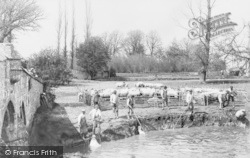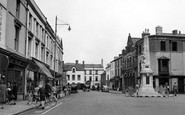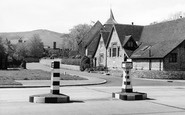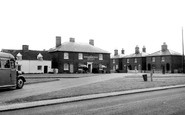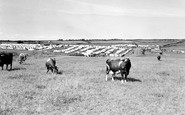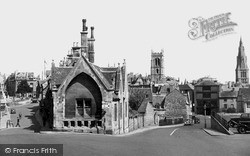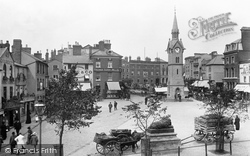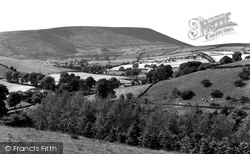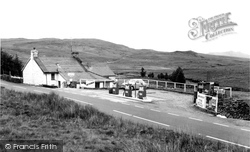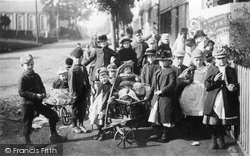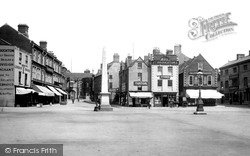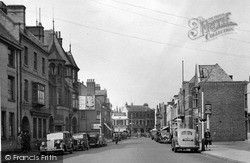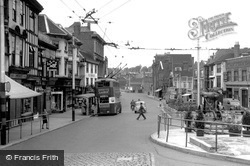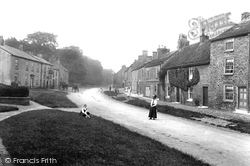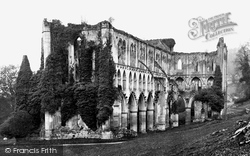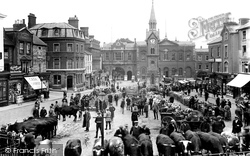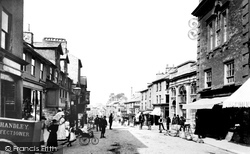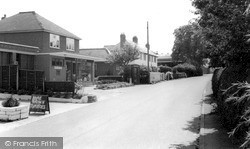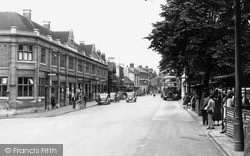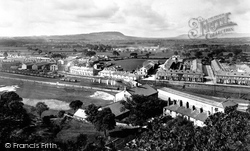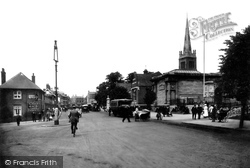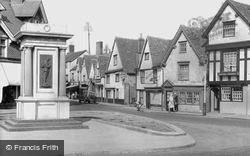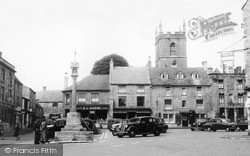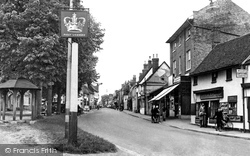Places
1 places found.
Those places high-lighted have photos. All locations may have maps, books and memories.
Photos
217 photos found. Showing results 121 to 140.
Maps
38 maps found.
Books
Sorry, no books were found that related to your search.
Memories
226 memories found. Showing results 61 to 70.
Bridgend
My family moved to Bridgend, as my father had a job with British Rail and could not cope with the shift work and travel to and from Chippenham. We moved to number eight Garfield Avenue and next door to Mrs O'Connell and her daughter and ...Read more
A memory of Bridgend in 1965 by
Willingdon Childhood
I was born and raised in Willingdon and lived two doors away from the previous correspondent Ian Friend. I also attended the school referred to as Willingdon Church Hall before a new school was built in Rapsons(?) Road, ...Read more
A memory of Willingdon by
The Blackmore Family
A little more information on the Blackmore family, they moved from Ide to become the licences of the Sturt Arms, I would say around 1880, Albert was born 1886 and his sister Alice in 1874. Miss Lillian Wreford sold Albert ...Read more
A memory of Down St Mary in 1940 by
Childhood In Waltham Cross
I was born in Waltham Cross in 1941, right in the middle of an air raid. My dad was yelling up at the planes saying "Not tonight Adolf, not tonight!" Waltham Cross back then was a wonderful village to grow up in. ...Read more
A memory of Waltham Cross in 1950 by
Tillingham When I Was A Lad
I remember helping my father Alan to herd the sheep from Marsh House Farm to West Hyde Farm. When we got to Tillingham Square we rested them and the villagers used to come out to see us. I used to sing in the church ...Read more
A memory of Tillingham in 1954 by
My First Visit
Was overwhelmed by open spaces,woodland, fields of pasture, arable, all seemingly laid out with such precision. Those responsible for management of the land appear to take so much care. Aberdeen Angus; Pheasants; ...Read more
A memory of Kirkton of Logie Buchan in 2007 by
Cows?
How strange to see cows on this picture. I remember lots and lots of sheep. The highlight of our walk across the main road and down the steep path to the beach (often through a layer of fog which blotted out the sun when you got there!) was to make baaing noises and wait for the reply!
A memory of Cayton Bay in 1964 by
Swimming
Nearly forgot about the quarry on the Markham road. Lucky to be still alive with all the dead sheep in there.
A memory of Aberbargoed in 1974 by
Memories Of My Time At Newton On Ouse
I was born at Newton On Ouse in March 1928. At the age of five I attended the local school whose headmaster was Alf Bradbury. Also at the age of five I began visiting Village Farm that was owned by ...Read more
A memory of Newton-on-Ouse in 1930 by
Farming At Hessenford
I moved to Hessenford in about 1958 when my father took on the tenancy of St Anne's Farm. The farm was situated up past the church on the lane that led from Hessenford to Bake. Previously we had lived at West Trenean Farm, ...Read more
A memory of Hessenford in 1958 by
Captions
200 captions found. Showing results 145 to 168.
Both Sheep Market and All Saints Street lead down to what was the Great North Road, but Stamford has since been bypassed. The town bus station is on the right, on the site of Stamford Castle.
A cart stands with hurdles for the sheep pens beside one of the French cast-iron lions given by Ferdinand Rothschild in 1887. They were hauled here by steam wagons from Waddesdon Manor.
The ancient name for the village is Barelegh (meaning 'wasteland'), but lush meadows now support flocks of sheep.
, is set in a spectacular gorge with a number of waterfalls, and is famous as one of the last places in Britain where licensed coracles were used, both for salmon fishing and (as we see in this view) sheep
Its isolated position has lent itself to appearing in several films - once as a sheep station in the Australian outback!
Then it declined, and found an unsavoury niche as a smuggling and sheep-rustling centre.
Climbing up from Dulverton the road crosses typical sheep-grazed Exmoor moorland, bright with yellow gorse flowers and heather, before descending into Winsford in the upper Exe valley.
We start in the Market Place of Grantham, a town of 30,000 whose medieval wealth was based on wool from the sheep grazing the Kesteven fields.
ALL SAINTS' CHURCH ZZZ04971 (Author's Collection) Much of the prosperity of Loughborough was built on sheep farming and the export of wool to France and Flanders where it was made into cloth.
The cannon, mounted on its plinth, is still in situ, and is now joined in the summer months by a floral sheep.
At the furthest end of the village is a fountain (1897) and the remains of the pinfold for stray sheep. The village still has a working blacksmith.
They managed huge sheep flocks for the wool trade, as well as iron smelting, glass production and leather tanning.
A cattle and sheep market is in full swing. To the left of the Clocktower and the County Hall is the Jacobean-style Town Hall and Corn Exchange building by Brandon, dated 1865.
The Town of Kendal Kendal—the 'Auld Grey Town' on the River Kent— was founded on the wealth won from the wool of Lakeland sheep.
On the stony Stanton Road, Domesday Scepecote (meaning 'shelter for sheep') was home to the powerful Bassett family.
This view of busy Sheep Street shows patient bus passengers corralled into queues by solid metal barriers. On the left the parade of Piccadilly Buildings ends with the George Hotel.
We are looking north towards Kemple End.The sizeable railway sidings that we can see here denote how important Clitheroe was as a distribution centre for this part of the Ribble Valley.After the sheep
This busy junction, uniting five roads, including Northampton Road and Sheep Street, was lit by a single, central lamp post.
The war memorial replaced an earlier obelisk with gas lamps attached; this had stood in the middle of what was a sheep market until 1885, the livestock market then moving to a new site in Bury
When Daniel Defoe visited, there were 20,000 sheep being sold here. This view shows the west end of the Market Square. Several routes enter town, but none disturb this pretty square.
When Daniel Defoe visited, there were 20,000 sheep being sold here. This view shows the west end of the Market Square. Several routes enter town, but none disturb this pretty square.
Findon is on the top of the Downs, just north of Worthing, and was noted for an annual sheep fair. Now horse breeding and training is an important local activity.
The market was originally chartered in 1542 and resurrected in 1920; a weekly auction was held under the trees, and the cattle and sheep were held here in pens.
On the stony Stanton Road, Domesday Scepecote (meaning 'shelter for sheep') was home to the powerful Bassett family.
Places (1)
Photos (217)
Memories (226)
Books (0)
Maps (38)


